When Öhlins dropped the RXF38 back in 2021, we felt that they really hit the nail on the head. We had a lot of good things to say about both the air spring and the damper, and we awarded the fork 5 stars in our review. Earlier this year (2024), we pitted the RXF38 against 6 other high-end enduro forks, and it scored a solid third place (with two of our testers actually choosing it as the fork they’d want to take home after the test was over, despite the numbers coming in slightly below the FOX 38 and the RockShox ZEB). Now, Öhlins has released a coil conversion kit for the RXF38, so naturally we were curious to give it a spin. Read on to find out how we’ve been getting along.
Öhlins RXF38 Coil Kit Highlights
- Drop-in design replaces air cartridge
- Kit includes lower plunger and top cap assembly
- Adjustable spring preload
- 7 spring rates available, from 7 to 12.4 N/mm
- Small top-out coil (one rate for all main spring rates)
- MSRP Complete Coil Kit (excluding springs): $180 USD / €182 EUR
- MSRP Springs: $58 USD / €59 EUR
Initial Impressions
We won’t go through the RXF38 in detail in this review, as we’ve covered it on two previous occasions – check out our initial review HERE and the 2024 fork shootout HERE for more. Suffice it say to that the RXF38 has been one of our favorite enduro forks since it first came on the scene in 2021, thanks to its impressively composed damper and a very versatile and adjustable air spring. The air spring features a third chamber that comes into play during the last part of the stroke, and adjusting its pressure has essentially the same effect as adding or removing tokens in a more traditional fork. Thanks to its cartridge-based design, it’s possible to swap the air spring assembly for a coil spring and back again, since the closed air spring cartridge does not use the stanchion walls and is thus impervious to any internal scouring that might be caused by running the coil kit.
You need a few simple tools to carry out the conversion. A 2mm allen to remove the coil preload dial and the rebound knob on the damper side, a classic Shimano HG cassette tool (make sure it’s a version without any center pin), and a specific tool from Öhlins to remove the bottom plate from the fork stanchion (a pin spanner will do the trick as well). Once you remove the air cartridge, just drop in the coil assembly in its place. Start from the bottom, insert the lower plunger assembly with the spring on it and tighten up the plate, then install the top cap assembly. Re-attach the coil preload dial and you’re good to go.
Öhlins provides a choice of 7 coil spring rates to choose from. We found the table below at TF Tuned, it offers a helpful guide for optimizing your setup. We were supplied with a white and a black spring for our 88-kg tester, who ended up preferring the lighter of the two options.
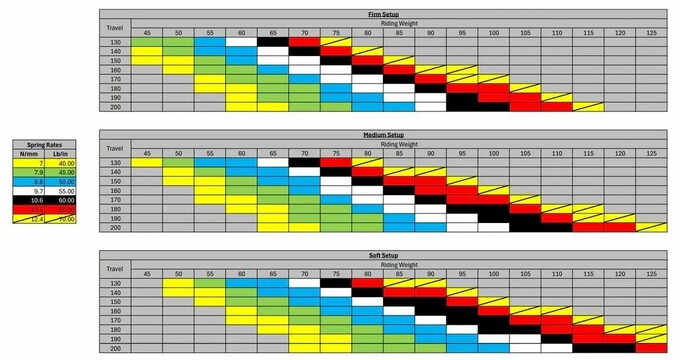
On The Trail
On the trail, the coil-equipped RXF38 behaved well from the start. The small-bump compliance is excellent, as you would expect from a coil fork, and we also found that the fork would ride surprisingly high in its travel, even with the lighter of the two spring options installed. At cruisier speeds on mellow gradients, the fork was reluctant to get into much of its travel (even with the lighter spring(, but it still did a good job of filtering out chatter and smoothening out any rough sections of trail. Once the speed picks up and the trail gets more challenging, the RXF starts to behave much like its air-spring counterpart. Always composed, the fork instills a lot of confidence and seems to thrive the harder you push it. The fork is silent and smooth, and the top-out spring ensures no pesky little top-out events ruin the smoothness of your runs. When you do get to the end of the travel, the bottom-out is equally confidence-inspiring and well-controlled. The damper offers a wide usable range, and you can pretty much dial in the amount of support you need without introducing much in the way of extra harshness. You may have to keep an eye on the plastic sleeves that wrap around the spring, these can sometimes slide down over time, which may lead to the spring rattling inside the stanchion. You can wind a little electric tape around the spring in the right place to stop this from happening if it becomes an issue.

A coil spring is by nature linear. In a fork, since there is no linkage in the system, the spring curve is always the same – a set amount of force per unit of spring compression. You pick a spring rate that fits your weight, terrain, and riding style, and then you’re locked in (there are progressive spring options on the market, but Öhlins does not make those available for the RXF38). You can of course pick a slightly lighter spring rate, and compensate to a certain point with your damping settings, and vice versa, but once you drop a coil spring into a fork the only way to change the spring rate is to swap out the spring itself. With an air spring, you have much more control over the spring curve, especially with the Öhlins air spring and its triple air chamber architecture. This level of versatility is hard to equal with a coil fork, but what you lose in adjustability you gain in consistency and ease of set-up.

So what about that legendary coil feel then? It is most noticeable on off-camber root/rock sections, where the “fluttery” movement of a coil can really be fully appreciated. Is the difference huge between the air and the coil version? No, it is not. Air springs have become increasingly good, obviously driven by the marketing department’s need to sell them as “coil-like”, and as a result the performance gap between coil and air forks has shrunk drastically (the gap may still be bigger when talking about shocks, since the addition of a linkage to the equation changes the feel and on the right frame, a coil will still feel exponentially more comfortable at comparable spring rates overall). So why pick one over the other? First of all, a coil fork is almost maintenance free. As long as the damper doesn’t blow up, you can pretty much keep it running almost forever with just the occasional lower leg service. The coil fork is also much less sensitive to any variations in altitude and air temperature, and of course, the spring rate remains the same whether your descents last for 1 minute or 45. The “ride it hard and put it away dirty” crowd will definitely love the coil life. If you like tinkering however, and you frequently find yourself adjusting your bike specifically to each trail/area you ride, you’ll be well served by the air version. Specifically, the Öhlins triple-chamber air spring is so good now, that you can pretty much get it to feel just like its coil counterpart if that is what you want. You can also make it more or less linear as well, which adds another dimension of tuning compared to the coil.
What’s The Bottom Line?
The RXF38 is a fantastic enduro fork, and that holds true for both the coil and the air sprung version. It’s big and burly and it’s made for demanding riding scenarios. Once the spring rate matches your requirements and your riding style, it’s hard to beat the simplicity and the longevity of a coil spring, and we’re stoked that Öhlins now makes the option available for their flagship single-crown fork. If you find yourself often making small adjustments to your suspension to match the ride of the day, you should be better served with the air spring version, but other than that, the coil life could be calling you.
More information at: www.ohlins.com.
About The Reviewer
Johan Hjord - Age: 51 // Years Riding MTB: 19 // Weight: 190-pounds (87-kg) // Height: 6'0" (1.84m)
Johan loves bikes, which strangely doesn’t make him any better at riding them. After many years spent practicing falling off cliffs with his snowboard, he took up mountain biking in 2005. Ever since, he’s mostly been riding bikes with too much suspension travel to cover up his many flaws as a rider. His 200-pound body weight coupled with unique skill for poor line choice and clumsy landings make him an expert on durability - if parts survive Johan, they’re pretty much okay for anybody. Johan rides flat pedals with a riding style that he describes as "none" (when in actuality he rips!). Having found most trail features to be not to his liking, Johan uses much of his spare time building his own. Johan’s other accomplishments include surviving this far and helping keep the Vital Media Machine’s stoke dial firmly on 11.
Photos by Johan Hjord and Nils Hjord





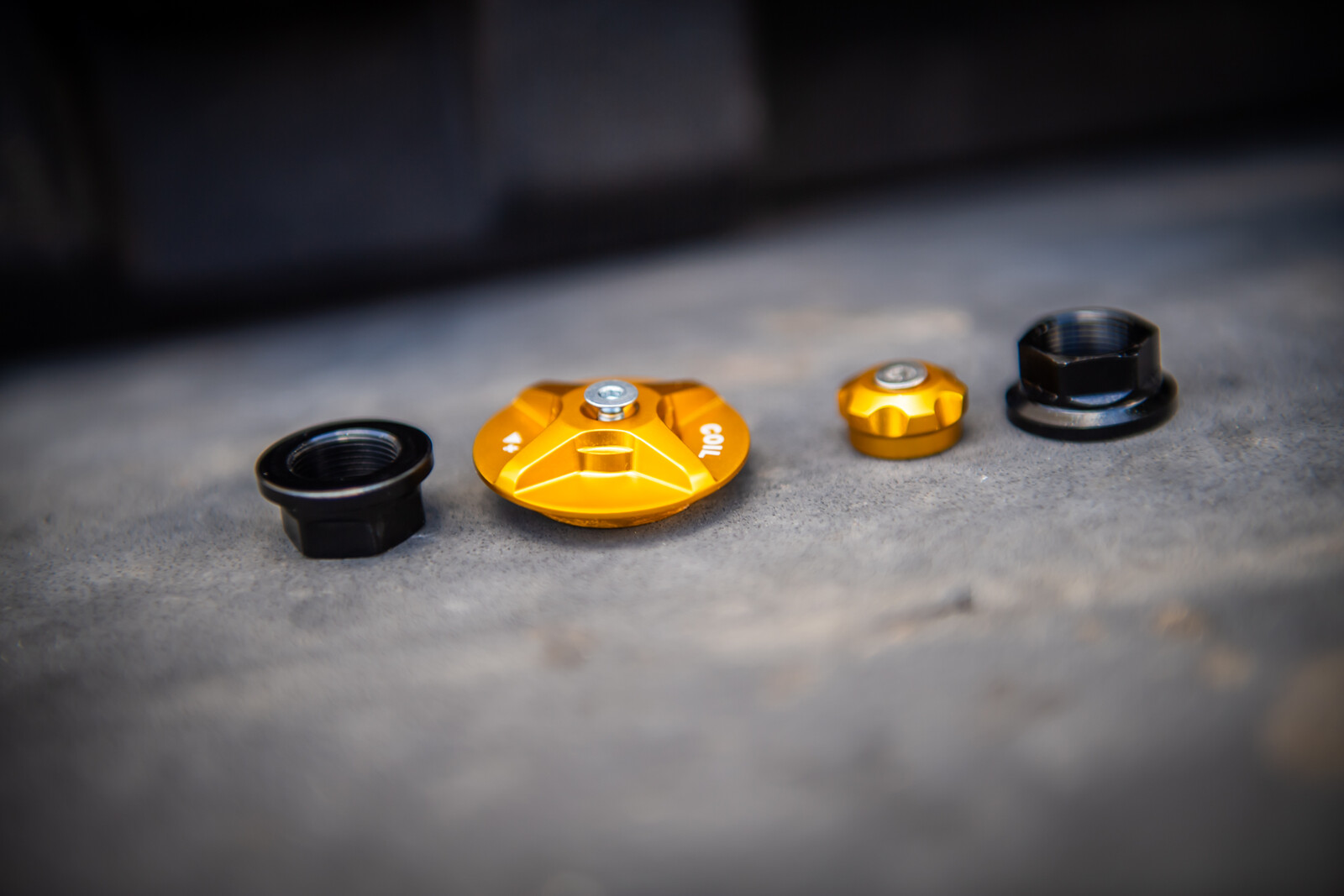
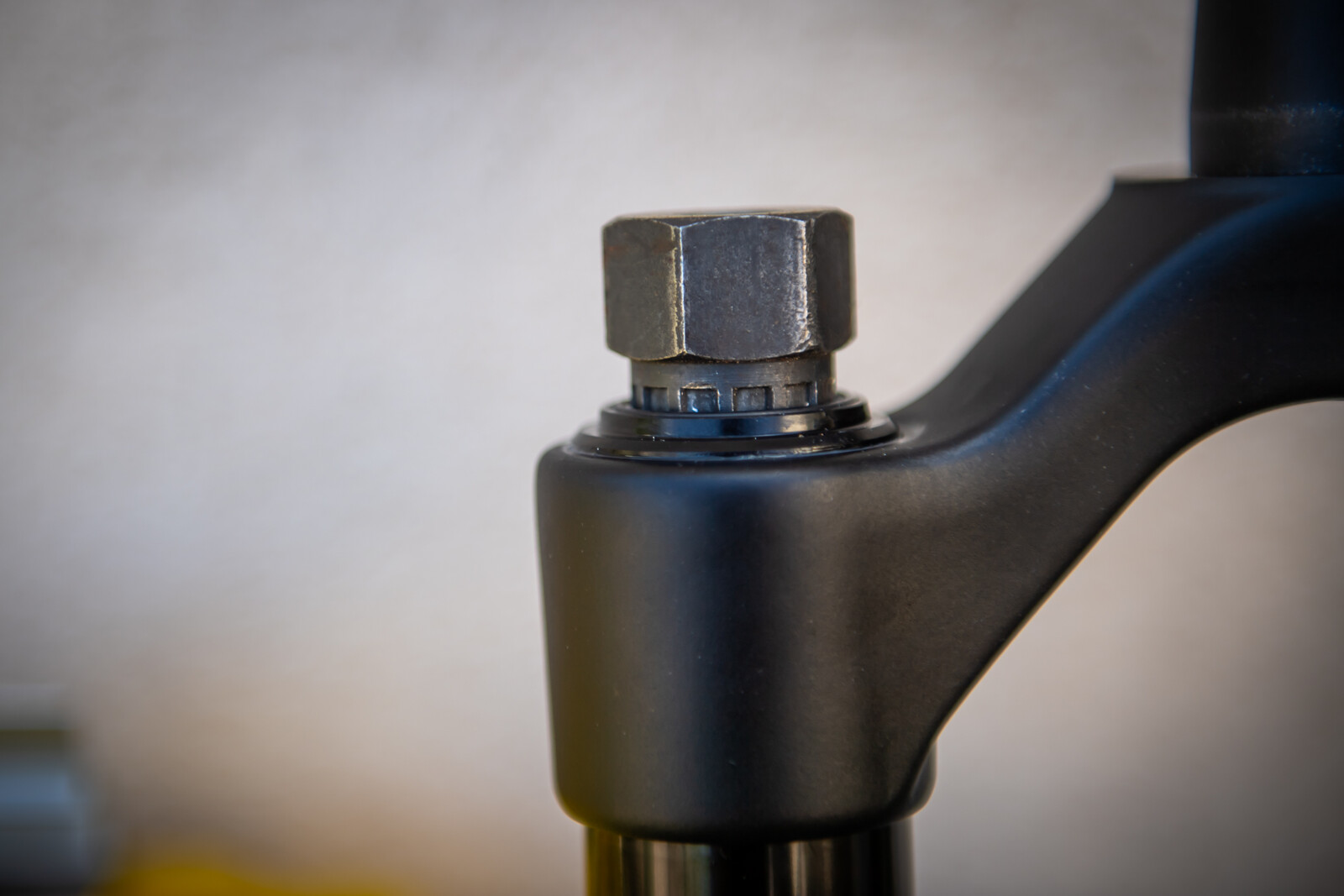

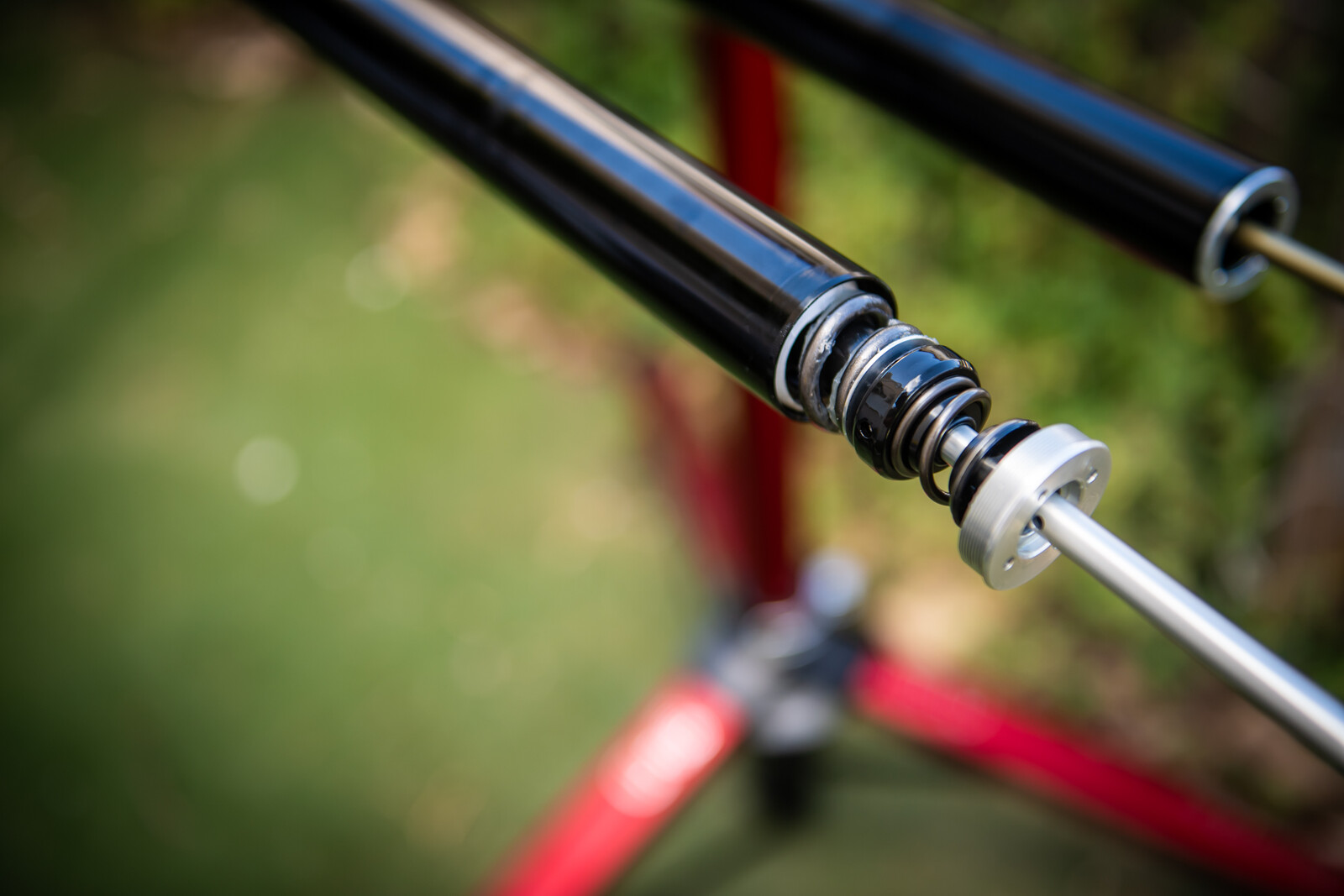
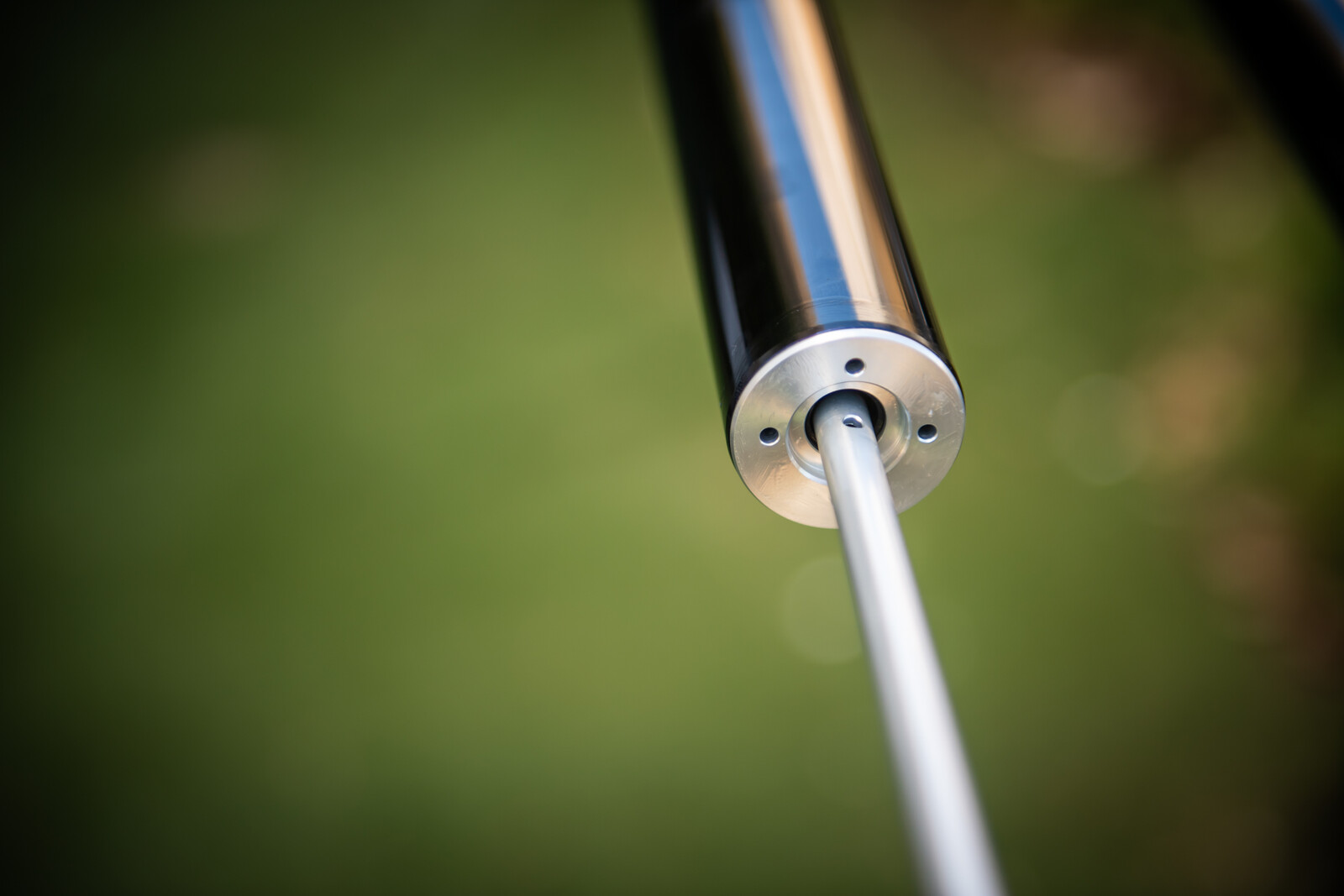






View replies to: Tested: Öhlins RXF38 Coil Conversion Kit
Comments